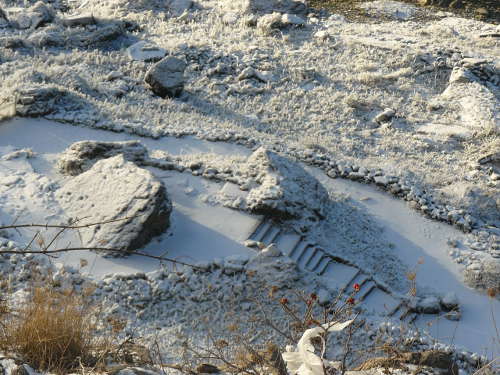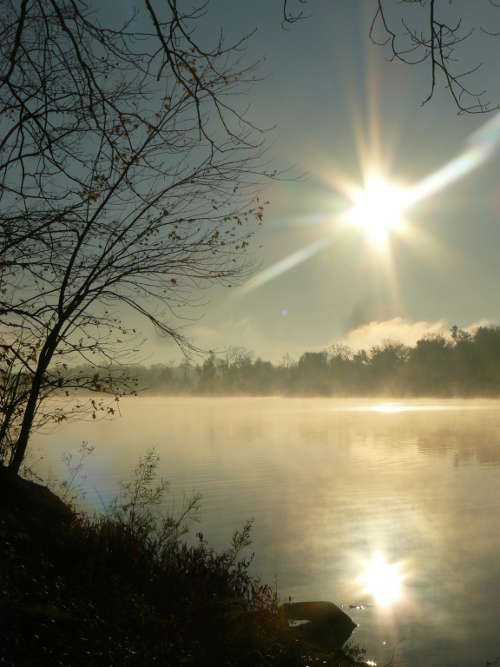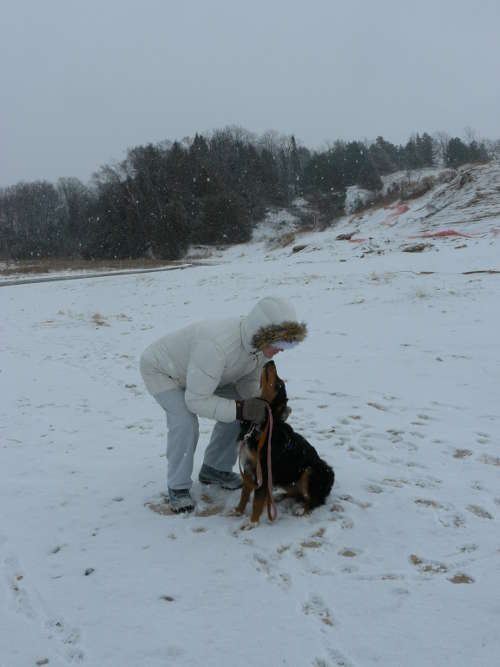 Location Taken: Niagara Falls, New York
Location Taken: Niagara Falls, New York
Time Taken: December 2009
Just the other day, a friend randomly mentioned that she didn’t fully know why it continues to get colder after the winter solstice. I gave her a basic description (it helped that her rough guess was already along the correct lines), but you know what, how about I do a more detailed explanation here?
You’ve probably noticed that the coldest days in winter and the hottest days in summer aren’t right on the solstices, but about two months later. But, the solstices are the extremes of the variation in the length of a day! How can the weather be getting hotter when the days are getting shorter, or colder as they get longer? The heat of the air comes primarily from the sun, doesn’t it?
Well, yes. More sunlight does mean more energy pumped into the atmosphere and thus more heat.
However.
The energy doesn’t just vanish at sunset. Some of it does bleed off at night, which is why they’re cooler. But the daily pattern of heat actually follows the same pattern as the year does. The warmest time is several hours after noon, and the coldest is in the wee hours of the morning, not long before sunrise. Well, not counting weather patterns. A snowstorm going through can make a day bitterly cold, no matter what it was like the night before.
It makes sense in a daily cycle, right? The most direct sunlight puts out the most heat, warming the air quite nicely at midday, but that heat doesn’t dissipate quickly. It’s still sticking around a bit a few hours later, and it’s not like the sun stopped putting out heat in the intermediate time. The temperature continues to rise just a bit more. However, it is not quite as much heat being added, and some of it does dissipate into the cold of space or the earth or the ocean or you. For a couple hours, there’s a balance between the amount of heat being added and the amount lost, but the sun continues setting. Eventually the balance tips the other way, and the air cools down. At night, the only extra heat being added into the system is what was absorbed by the air/earth/ocean/etc. Much less than what the sun puts out. But right near sunrise, some heat starts bleeding in from the already-lit areas to the east, and the daily heating begins.
Replace “hours” with “months” in that description, and it’s quite close to how the seasonal heating patterns work. The two key differences are that you’re replacing the setting/rising pattern of heat variation with the angle of light heating variation, and that the sun doesn’t vanish in winter and stop putting out heat in most of the planet (just in the Arctic and Antarctic circles, the lands of the midnight sun).
Oh, and just in case your science teachers failed you, I’ve heard that far too many believe that it’s warmer in the summer because the Earth is closer to the sun at that time. That is false. We are actually closest to the sun in January. The seasons are caused because the Earth’s rotational axis isn’t exactly perpendicular to the orbital plane we travel on along the sun. It’s 23 degrees off. And well, if you’re in the northern hemisphere, your half of the planet is pointing away from the sun in winter and the angle of light coming in from the sun is much lower, much closer to the horizon. Not only do you get shorter days, but thanks to basic geometry, those lower angles of light have to pass through much more of the atmosphere to reach your eye, which means far more opportunities for the photon to hit something and get absorbed or bounced back into space.
Oh, and the seasons are reversed in the southern hemisphere. It’s summer in Australia right now. And they just had their summer solstice. And, amusingly enough, their summers actually are warmer than the northern hemisphere’s because the sun is closer to them during this time of year. It doesn’t cause the seasons, but it does have an effect.
 Location Taken: Frankfort, Michigan
Location Taken: Frankfort, Michigan



